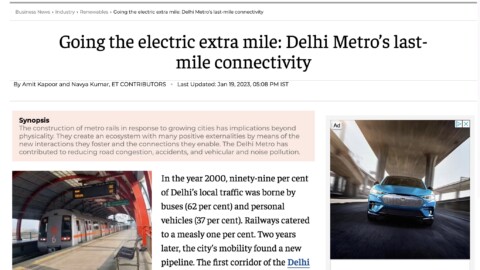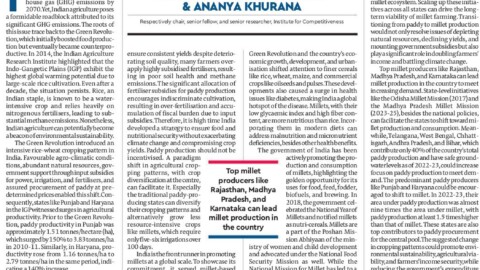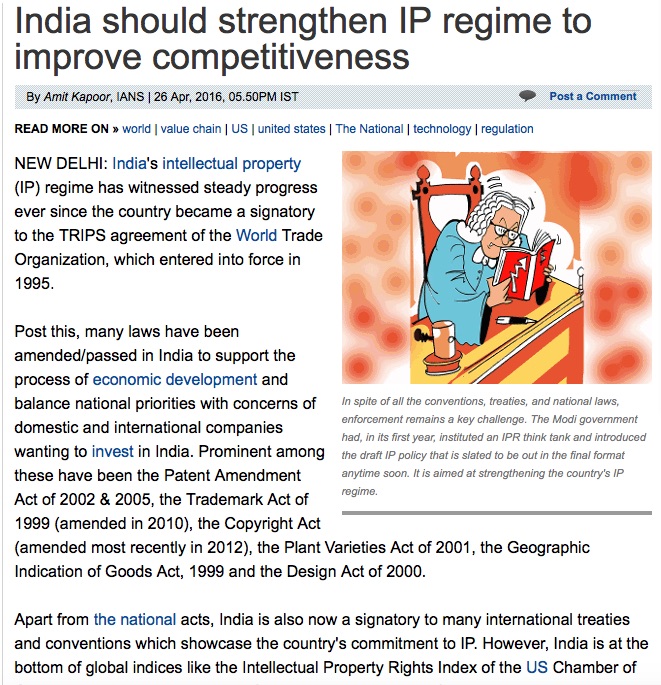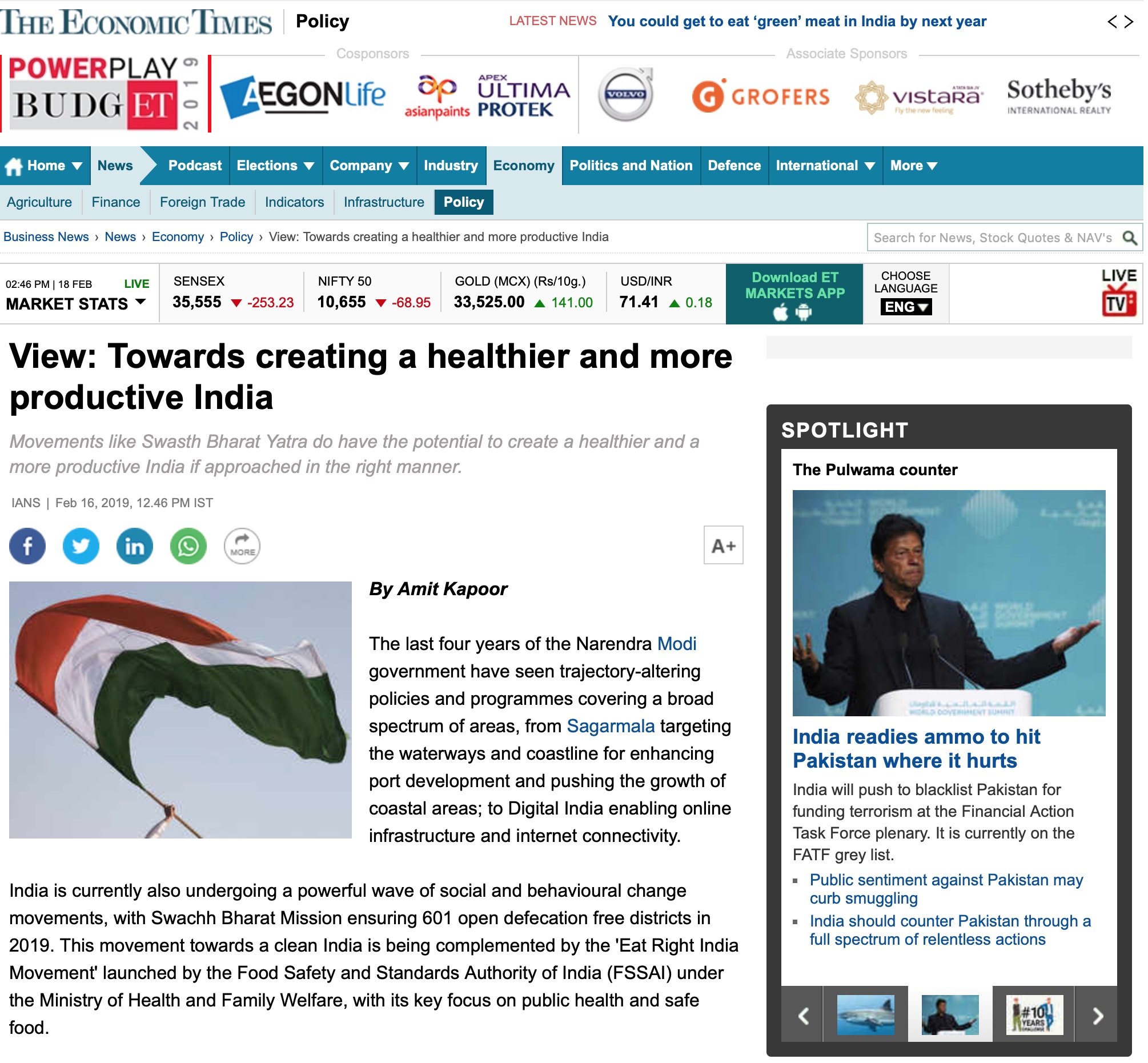By Amit Kapoor and Inputs by Sheen Zutshi
Recent discussions on employment generation in India have been sparked by a recent report from Citigroup India. The report raises concerns that, despite a strong 7 per cent GDP growth rate, the country may face challenges in creating enough job opportunities. According to the latest Periodic Labor Force Survey (PLFS) and RBI’s KLEMS data, India created over 80 million jobs from 2017-18 to 2021-22, averaging more than 20 million new jobs per year. This underscores the dynamic nature of India’s labor market and significant progress in employment generation.
While these figures highlight significant progress, there is a broader narrative that demands attention: India’s strides towards achieving Sustainable Development Goal (SDG) 8, which emphasizes decent work and economic growth. Several indicators for Goal 8 are showing promising trends. The unemployment rate has been steadily decreasing and is nearing the target of 3 per cent, while the overall labour force participation rate (LFPR) stood at 61.60 per cent in 2022-23, with a goal of reaching 68.3 per cent by 2030. This trajectory suggests that India is on track to meet the SDG targets by 2030. However, attaining truly decent work conditions requires a nuanced understanding of how India is achieving its unemployment and LFPR targets. To unravel the complexities behind these figures, we’ve undertaken a granular analysis of PLFS data spanning 2017-18 to 2022-23. Our approach dissects labor force participation rates through twin lenses: educational attainment and skill levels, as codified in the National Classification of Occupations.
LFPR by Educational Attainment
India’s Labour Force Participation Rate (LFPR) for those aged 15 and above has seen a marked uptick, as evidenced by recent data. This trend, pervasive across the rural-urban divide, is captured through the ‘Usual Status’ metric—a holistic measure encompassing both usual principal activity and usual subsidiary economic activity of a person. Our deep dive into this data unveils the nuanced interplay between educational attainment and workforce engagement.
The most notable increase has been observed among the “Not Literate” category, with the LFPR rising from 47.9 per cent in 2017-18 to 56.7 per cent in 2021-22—an impressive growth of 4.32 per cent. This surge underscores the country’s efforts to engage its non-literate population in economic activities. States like Nagaland, Arunachal Pradesh, Puducherry, Sikkim, Jharkhand, Kerala, Gujarat, Uttarakhand, and Uttar Pradesh have spearheaded this growth, with each witnessing more than a 9 per cent increase in LFPR among the non-literate demographic. In contrast, LFPR growth among more educated groups has been modest. The LFPR for graduates increased from 60 per cent to 64.5 per cent, while for those with postgraduate degrees and above, it rose from 67.8 per cent to 70.6 per cent, reflecting a national average growth rate of less than 2 per cent over the same period. Notably, only 12 states in the graduate category and just 8 states in the postgraduate category have exceeded this national growth rate.
While urban LFPR trends largely mirror the national picture, a fascinating story unfolds in rural India. Diving deep into the LFPR data for those aged 15 and above (Usual Status), we uncover a striking surge among “Diploma/Certificate course” holders. This group saw their LFPR jump from 69.5 per cent in 2017-18 to a robust 73.8 per cent in 2021-22 – a remarkable 4.32 per cent increase. This isn’t just a blip on the radar. State-level data reveals a groundswell, with 25 out of 36 states and union territories riding this wave. Leading the charge are the Northeastern states – Arunachal Pradesh, Sikkim, and Tripura – boasting compound annual growth rates (CAGR) above 13 per cent. They are closely followed by Chandigarh, Uttarakhand, and Uttar Pradesh, which have growth rates exceeding 7 per cent. These figures highlight the increasing integration of diploma and certificate holders in the rural workforce, further suggesting that targeted skill development initiatives could be crucial in unlocking India’s rural economic potential.
Skill Levels: still a puzzle?
India’s labor market presents a complex puzzle, as revealed by the latest Periodic Labour Force Survey (PLFS) data for 2022-23. While LFPR continues to grow, the distribution of skills across the workforce shows significant imbalances. The data reveals a stark concentration in lower skill levels, with 22.15% of workers classified under Skill Level 1 (low skilled) and a substantial 66.89% under Skill Level 2 (semi-skilled). In contrast, only 2.37% fall under Skill Level 3 and 8.59% under Skill Level 4, both representing highly skilled categories. This distribution indicates a shortage of highly skilled workers in the Indian labor market.
The state-level analysis further illuminates this complexity. For Skill Level 1, states like Andhra Pradesh, Daman & Diu, Dadra & Nagar Haveli, Tamil Nadu, West Bengal, Meghalaya, Bihar, and Maharashtra show workforce concentrations above 25%. Interestingly, Meghalaya exhibited a remarkable growth rate of 26.80% between 2017-18 and 2022-23, while West Bengal and Andhra Pradesh experienced declines of -3.62% and -3.19% respectively. In the Skill Level 2 category, states such as Arunachal Pradesh, Mizoram, Manipur, Sikkim, Nagaland, Rajasthan, and Uttar Pradesh not only have over 75% of their workforce in this bracket but also show a Compound Annual Growth Rate (CAGR) above 1.5%. This trend suggests a growing concentration of semi-skilled workers in these regions. The relatively lower percentages in Skill Levels 3 and 4 across the country highlight a critical need to boost the highly skilled workforce to meet the demands of an evolving job market and to drive innovation-led economic growth This pattern highlights the urgent need to refine our skill development strategies to address the current mismatch between workforce capabilities and job market demands. The challenge is twofold: equipping workers with skills that match current demand while preparing for future shifts in the nature of work.
As India aims to become a developed economy by 2047, a comprehensive approach to labor force analysis is essential. While current PLFS data does tell a story about job creation but it also exposes challenges we are to overcome for the future. To fully grasp the intricacies of India’s labor landscape, we need to expand our analytical scope beyond conventional metrics like unemployment rates and LFPR. A more comprehensive approach, particularly one that incorporates underemployment data in future PLFS iterations, would provide policymakers with a nuanced and holistic view of the workforce. This multifaceted analysis is crucial for developing effective strategies that align with India’s vision for 2047, fostering sustainable growth and equitable prosperity.
The article was published with Economic Times on July 11, 2024.
























